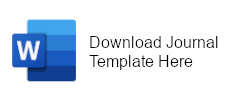The Implementation of Supervised Learning and Cloud-Based Technology for Petrophysics: Identification of Hydrocarbon Prospect Zone and Classification of Rock Facies
Keywords:
Petrophysics, Supervised Learning, Cloud Computing Technology, Rock FaciesAbstract
The evolution of oil and gas industry technology has always been improving through time. The fluctuations, uncertainties, and investments had never been higher than the present. The combination of these conditions gave birth to the high risk and high return nature of Oil and Gas Industries, specifically in the Exploration and Production (E&P) activities. In E&P activities, one of the important analyses that has to be done was Petrophysics. Petrophysical analysis in E&P activities, were still using an archaic and lagging method with certain problems in prediction accuracy and rapid analysis. Thus, data-driven methods were expected to solve this challenge with machine learning (ML) techniques that could be applied to determine hydrocarbon prospect zones within the best acceptable accuracy range. In this study, the proposed solution utilizes data from Volve Oil Field, North Sea. This field potentially derive an advanced petrophysical model comparable to interpreted trends in seismic data and stratigraphic sequences due to their subsurface complexity. In this paper, variations of ML techniques have been implemented to build the models that predict the hydrocarbon prospect zone through petrophysical analysis and classify the rock facies. The proposed solution is examined through the evaluation process of 5 wells and compares the best algorithms of 4 options such as XGBoost, Extra Trees, and Random Forest, LightGBM. This solution contributes to reservoir characterization through the accomplished multi-well petrophysical analysis by high accuracy in just seconds. The prediction of petrophysical analysis obtained accuracy above 90% (including of permeability, water saturation, and effective porosity); rock facies reaches 80,0% (multiclass data up to 9 labels) using LightGBM Algorithm; meanwhile, the hydrocarbon prospect zone reaches 95,6% (binary data) using ExtraTreesClassifier algorithm. The processing time is calculated in a range of 0.2 - 1.5 seconds separated by training and testing data under an 8:2 ratio. Our models are in development using cloud computing technologies, accessible by nearly any device in any location, so long as there are internet connections available, giving the flexibility to utilize features previously unavailable online. The use of cloud computing and artificial intelligence technology, which is compatible and in sync with the development of this solution, can further increase the value, flexibility, and usability of primarily GGR data. The combination of the best efficiency and accuracy allows for better planning and execution of POD's, aid GGR engineers in finding prospect zones and locating recommended new well faster, which can further increase the economy, scalability, and accuracy of the hydrocarbon zone prediction.



